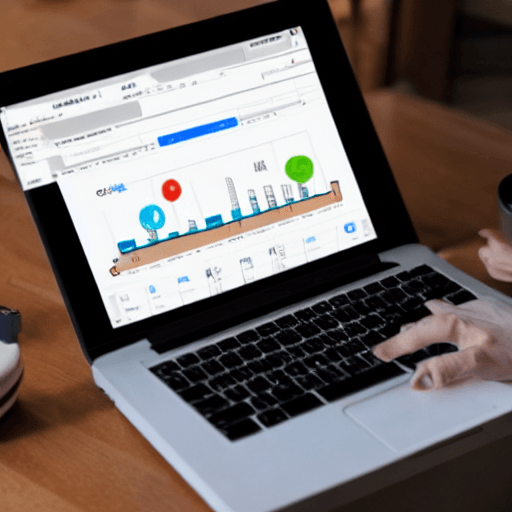

In the fast-paced world of digital advertising, staying ahead of the curve is paramount. Google Ads, with its vast reach and granular targeting options, offers incredible potential. However, simply launching campaigns isn’t enough. Continuous optimization is the key to unlocking maximum return on investment (ROI). Traditional A/B testing, while valuable, can be time-consuming and resource-intensive. This article delves into the power of automating A/B testing within Google Ads, revealing strategies, tools, and best practices to dramatically accelerate your optimization process and achieve superior results. We’ll explore how automation isn’t just a trend, but a necessity for any serious Google Ads manager.
Before we dive into automation, let’s acknowledge the hurdles of manual A/B testing. The process typically involves creating multiple variations of your ads – headlines, descriptions, calls to action, landing pages – and then painstakingly monitoring their performance. This requires significant time investment. You need to:
This manual approach is prone to several issues:
Consider a small e-commerce business selling handmade jewelry. Without automation, they might spend hours each week creating and testing different ad copy variations, only to find that one slightly tweaked headline performs marginally better than another. This effort could be better spent on strategic campaign planning or product development.
Google Ads offers built-in automation features that can significantly streamline the A/B testing process. These features allow you to automatically test different variations of your ads and dynamically adjust your campaigns based on performance. Let’s explore the key tools and techniques:
Google Ads’ Automated Extensions automatically generate and test different extension types – sitelink extensions, callout extensions, and structured snippet extensions. These extensions provide additional information and improve ad visibility. The system automatically tests different variations of these extensions, optimizing for clicks and conversions. For example, Google might test different descriptions for sitelink extensions, determining which ones drive the most traffic to your website. This is a low-effort way to improve your ad performance.
Dynamic Ads are a powerful automation tool that automatically generates ads based on the products or content on your website. Google’s algorithm analyzes your website and creates personalized ads for each user. Crucially, Dynamic Ads also incorporate A/B testing. Google continuously tests different ad copy, images, and calls to action to optimize for conversions. This is particularly effective for e-commerce businesses with large product catalogs. A retailer selling shoes can use Dynamic Ads to automatically show users ads featuring the shoes they’ve recently viewed on their website, along with different ad copy variations to see which resonates best.
Campaign Experiments allow you to run a controlled test against a control group. You can define specific campaign settings (e.g., targeting, bidding strategy, budget) and then compare the performance of the test group to the control group. Google automatically identifies the best-performing settings and applies them to the control group. This provides a more granular level of control than simply relying on Dynamic Ads.
While not strictly A/B testing, Google’s Smart Bidding strategies (e.g., Target CPA, Target ROAS) automatically adjust your bids based on real-time performance data. These strategies learn from your data and optimize for your desired outcomes. They effectively act as a continuous A/B test, constantly evaluating different bidding levels to maximize conversions. For instance, a Smart Bidding strategy targeting a specific cost per acquisition (CPA) will automatically adjust bids to achieve that CPA, effectively testing different bidding levels to find the optimal balance between cost and conversions.
Simply enabling automation isn’t enough. To maximize the effectiveness of your automated A/B testing, follow these best practices:
For example, a travel agency could test different landing pages for users who click on an ad promoting a specific vacation package. One landing page might focus on the destination, while another might highlight the included activities. By tracking conversion rates for each landing page, the agency can determine which resonates best with its target audience.
It’s crucial to track the right metrics to assess the effectiveness of your automated A/B testing. Here are some key metrics to monitor:
By tracking these metrics, you can determine which variations are performing best and make data-driven decisions about your advertising campaigns.
Automated A/B testing is a powerful tool for optimizing your Google Ads campaigns. By leveraging Google’s built-in automation features and following best practices, you can significantly improve your ad performance and achieve your marketing goals. Remember to start small, focus on key elements, and continuously monitor your results to ensure you’re getting the most out of your automated testing efforts.
Would you like me to delve deeper into a specific aspect of automated A/B testing, such as setting up Campaign Experiments or analyzing Smart Bidding strategies?
Tags: Google Ads, A/B Testing, Automation, Optimization, Campaign Management, ROI, Conversion Rate, Ad Copy, Landing Pages, Dynamic Ads
[…] Dedicated Chatbot Analytics Platforms: Platforms like Dashbot and Botanalytics provide more advanced analytics capabilities, including sentiment analysis, user segmentation, and A/B testing. […]
[…] integrating Google Ads and GA4 requires careful attention to technical details. Here are some key […]
[…] Integrating Google Ads data with data from other marketing channels – such as Google Analytics, social media platforms, and email marketing systems – is crucial for implementing effective cross-channel attribution. […]